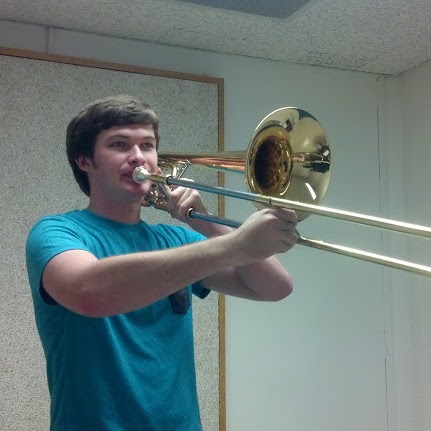John H Tiernan
age ~87
from Tyrone, GA
- Also known as:
-
- John Henry Tiernan
- John Jack Tiernan
- John A Tiernan
- John Patrick Tiernan
- John G Tiernan
- John P Tiernan
- John Tierran
- Phone and address:
- 2275 Castle Lake Dr, Tyrone, GA 30290
John Tiernan Phones & Addresses
- 2275 Castle Lake Dr, Tyrone, GA 30290
- 21 Kilburn Pl, Newnan, GA 30265 • 7703040684
- Chattahoochee Hills, GA
- Calistoga, CA
- Johns Island, SC
- Peachtree City, GA
- Freehold, NJ
- Napa, CA
- Fayetteville, GA
Lawyers & Attorneys

John Tiernan - Lawyer
view sourceISLN:
903144740
Admitted:
1981
University:
California State University at Chico, B.A., 1973
Law School:
McGeorge School of Law, J.D., 1981
Resumes

John Tiernan
view source
John Tiernan
view source
John Tiernan
view sourceLocation:
United States
Name / Title
Company / Classification
Phones & Addresses
Director
Nsi-US, Inc
710 Arrowhead Trl, Henderson, NV 89002
665 Hwy 74 S, Peachtree City, GA 30269
665 Hwy 74 S, Peachtree City, GA 30269
incorporator
The Preserve at Stoney Ridge Homeowners Association, Inc
OWN/OPERATE/MANAGE PROPERTY-THE PRESERVE AT STONEY RIDGE
OWN/OPERATE/MANAGE PROPERTY-THE PRESERVE AT STONEY RIDGE
Peachtree City, GA 30269
President
TIERNAN & PATRYLO WEST, INC
665 Hwy 74 S SUITE 100, Peachtree City, GA 30269
Us Patents
-
System For Fracturing Wells Using Supplemental Longer-Burning Propellants
view source -
US Patent:7073589, Jul 11, 2006
-
Filed:Jan 22, 2003
-
Appl. No.:10/348809
-
Inventors:John P. Tiernan - Newnan GA, US
Richard S. Passamaneck - Golden CO, US -
Assignee:Propellant Fracturing & Stimulation, LLC - Peachtree City GA
-
International Classification:E21B 43/263
F42D 3/04
F42B 3/04 -
US Classification:1663082, 166 63, 1661775, 166299, 175 71, 102313, 102318, 102320
-
Abstract:A system for fracturing wells uses a primary propellant charge to initially produce pressures within the well in excess of the maximum fracture extension pressure of the surrounding formation, but below that which would cause damage to the well. A supplemental propellant charge burns for a substantially longer period of time than the primary propellant charge, and thereby maintains pressures within the well in excess of the maximum fracture extension pressure for a significant period of time following completion of the primary propellant burn.
-
Propellant For Fracturing Wells
view source -
US Patent:7409911, Aug 12, 2008
-
Filed:Sep 8, 2005
-
Appl. No.:11/221634
-
Inventors:John P. Tiernan - Newnan GA, US
Richard S. Passamaneck - Golden CO, US -
Assignee:Propellant Fracturing & Stimulation, LLC - Peachtree City GA
-
International Classification:F42D 1/04
E21B 43/26 -
US Classification:102322, 102332, 1022756, 102289, 166271, 1663081
-
Abstract:An apparatus for fracturing wells employs a propellant charge and an ignition cord wrapped around the outer surface of the propellant charge to rapidly ignite the outer surface of the propellant charge.
-
Propellant Cartridge With Restrictor Plugs For Fracturing Wells
view source -
US Patent:7487827, Feb 10, 2009
-
Filed:Feb 17, 2006
-
Appl. No.:11/357599
-
Inventors:John P. Tiernan - Newnan GA, US
-
Assignee:Propellant Fracturing & Stimulation, LLC - Peachtree City GA
-
International Classification:E21B 43/263
-
US Classification:166 63, 1663081
-
Abstract:An apparatus for fracturing a well has a propellant charge held by a carrier, and upper and lower restrictor plugs secured to the carrier above and below the propellant charge, respectively. The restrictor plugs allow a restricted flow of combustion gases generated by the propellant charge to pass the restrictor plugs, but maintain sufficient pressure in the well between the restrictor plugs to fracture the formation surrounding the well.
-
Propellant Fracturing System For Wells
view source -
US Patent:8522863, Sep 3, 2013
-
Filed:Apr 8, 2010
-
Appl. No.:12/756695
-
Inventors:John P. Tiernan - Newnan GA, US
Guy B. Spear - Marshall VA, US
Don Landis - Hampton GA, US -
Assignee:Propellant Fracturing & Stimulation, LLC - Peachtree City GA
-
International Classification:E21B 29/02
E21B 43/263 -
US Classification:166 63, 166299
-
Abstract:A fracturing system for wells has a propellant charge having a known surface area for combustion, and a combustion rate as a function of pressure with lower combustion rates at lower pressures and rapidly increasing combustion rates at higher pressures separated by a knee in the combustion rate function. The propellant charge is initially sealed within a vessel as it is inserted into a well. The system also includes means for creating openings in the vessel on ignition of the propellant charge in the well, such that the openings have a known combined flow area selected to create a condition of choked flow of combustion gases from within the vessel and maintain pressures within the vessel below the knee in the combustion rate function.
-
Modular Propellant Assembly For Fracturing Wells
view source -
US Patent:20030155112, Aug 21, 2003
-
Filed:Jan 10, 2003
-
Appl. No.:10/340393
-
Inventors:John Tiernan - Newnan GA, US
Richard Passamaneck - Golden CO, US
Lynn Frazier - Robstown TX, US
Dany Normand - Sharpsburg GA, US -
International Classification:E21B043/263
-
US Classification:166/063000, 166/308000, 166/299000
-
Abstract:A modular propellant assembly for fracturing wells has a propellant charge with a detonating cord extending along its length to ignite the propellant. Each propellant module also has end caps with male and female connectors that enable propellant modules to be connected in an end-to-end relationship to any desired length. These connectors align the ends of the detonating cords in adjacent propellant modules and are sealed with O-rings so that the detonating cords remains dry while submerged at high pressures. This enables the detonating cords to be ignited in series.
-
Propellant For Fracturing Wells
view source -
US Patent:20060075890, Apr 13, 2006
-
Filed:Oct 13, 2005
-
Appl. No.:11/249667
-
Inventors:John Tiernan - Newnan GA, US
-
International Classification:F41F 5/00
-
US Classification:089001150
-
Abstract:An apparatus for fracturing wells employs a propellant charge with a metallic foil to rapidly ignite the surface of the propellant charge. The assembly can be covered with an protective coating to protect against fluids in the well bore.
-
Propellant For Fracturing Wells
view source -
US Patent:20080264289, Oct 30, 2008
-
Filed:Jul 9, 2008
-
Appl. No.:12/169946
-
Inventors:John P. Tiernan - Newnan GA, US
Richard S. Passamaneck - Golden CO, US -
Assignee:PROPELLANT FRACTURING & STIMULATION, LLC - Peachtree City GA
-
International Classification:F42B 3/00
F42D 1/04 -
US Classification:102322, 102332
-
Abstract:An apparatus for fracturing wells employs a propellant charge and an ignition cord wrapped around the outer surface of the propellant charge to rapidly ignite the outer surface of the propellant charge.
-
Methods For Detecting Materials In A Body Cavity
view source -
US Patent:20160015472, Jan 21, 2016
-
Filed:Mar 14, 2014
-
Appl. No.:14/776768
-
Inventors:Aaron Matthew NOBLE - Newnan GA, US
John Patrick TIERNAN - Newnan GA, US
Lawrence Scott ARONSON - Peachtree City GA, US -
International Classification:A61B 19/00
A61B 17/28
A61B 17/06
A61B 17/3211
A61F 13/44
A61F 13/36 -
Abstract:The present disclosure relates to a medical material or surgical sponge including an integral construction having a plurality of micro-particle taggants that are UV or radio wave detectable. The sponge includes a fibrous, nonwoven fabric containing entangled fibers arranged in an interconnecting patterned relationship in a plane of the fabric, and at least one UV or radio wave detectable element positioned interiorly of the fibrous nonwoven fabric in the plane. The fibers of the nonwoven fabric may be inter twined about the micro-particle taggants.
Medicine Doctors

John F. Tiernan
view sourceSpecialties:
Anesthesiology
Work:
Hartford Anesthesiology Associates
80 Seymour St STE JB333, Hartford, CT 06102
8609722117 (phone), 8605451784 (fax)
80 Seymour St STE JB333, Hartford, CT 06102
8609722117 (phone), 8605451784 (fax)
Education:
Medical School
University of Connecticut School of Medicine
Graduated: 1990
University of Connecticut School of Medicine
Graduated: 1990
Languages:
English
Description:
Dr. Tiernan graduated from the University of Connecticut School of Medicine in 1990. He works in Hartford, CT and specializes in Anesthesiology. Dr. Tiernan is affiliated with Hartford Hospital and UConn Health Center.
Classmates

John Tiernan
view sourceSchools:
Mather High School Munising MI 1966-1970
Community:
Richard Hampton, Raoul Revord, Carl Wickstrom

John Tiernan
view sourceSchools:
Andover High School Andover KS 1981-1985
Community:
Kim Bullerwell

John Tiernan
view sourceSchools:
St. Rose of Lima School Brooklyn NY 1954-1958
Community:
Charles Hamm, Maite Tamayo, John Mitchell, James Crimmins

John Tiernan
view sourceSchools:
All Hallows High School Bronx NY 1961-1965
Community:
Dominick Vanacore, John Butler, Judy Jones, Peter Bresciani, Arthur Maloney, Michael Murphy, Billy Garbarino, Dean Dalbery, Joe Nocerino, Bill Morris, Steven Milanese

John Tiernan, Mt. Trinity...
view source
Mt. Trinity Academy, Wate...
view sourceGraduates:
John Tiernan (1970-1974),
Brenda Hoey (1957-1961),
Jacqueline Dunphy (1957-1961),
John Zanco (1959-1963),
Elaine Gambone (1958-1960)
Brenda Hoey (1957-1961),
Jacqueline Dunphy (1957-1961),
John Zanco (1959-1963),
Elaine Gambone (1958-1960)

Mather High School, Munis...
view sourceGraduates:
John Leveque (1967-1971),
Jonnie Wapienik (1961-1965),
John Hancock (1968-1972),
John Tiernan (1966-1970)
Jonnie Wapienik (1961-1965),
John Hancock (1968-1972),
John Tiernan (1966-1970)

St. Rose of Lima School, ...
view sourceGraduates:
John Tiernan (1954-1958),
Francis Walsh (1957-1961),
Aimee Scannapieco (1989-1993)
Francis Walsh (1957-1961),
Aimee Scannapieco (1989-1993)
Youtube
Myspace
Googleplus

John Tiernan
Work:
The Pheasant - Barman (2011)
Education:
St, Marys Dioscean
Tagline:
Creator of such YouTube Hits as The John Tiernan Show & ...... well there is no more.

John Tiernan

John Tiernan
Tagline:
Software Engineer/Maker/Other

John Tiernan

John Tiernan

John Tiernan

John Tiernan

John Tiernan

John Tiernan
view sourceFriends:
Monica Williams, Patrick Michael Lala, Kye Christensen, Alyssa Biery, John Tiernan. Photo Log in to contact John Tiernan.
John Tiernan. Photo Log in to contact John Tiernan.

John Tiernan
view source
John Tiernan
view source
John Tiernan
view source
John Tiernan
view source
John Tiernan
view source
John Christopher Tiernan
view source
John M Tiernan
view sourcePlaxo

John Tiernan
view sourceSalesman at Rosbeck Realty
Get Report for John H Tiernan from Tyrone, GA, age ~87








